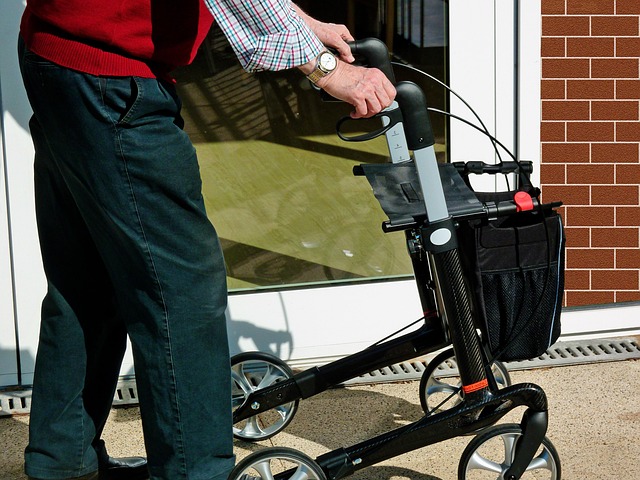Understanding New Retirement Apartments and Finding the Right Fit
Modern retirement apartments represent a significant shift in how older adults approach their living arrangements during retirement years. These purpose-built communities combine the independence of private accommodation with the security and social benefits of shared facilities, creating an appealing alternative to traditional care homes for active older adults seeking a balanced lifestyle.

The landscape of retirement living has evolved dramatically in recent years, with new retirement apartments emerging as a popular choice for older adults who value independence while seeking community connection. These modern developments cater specifically to the changing needs and expectations of today’s retirees, offering a lifestyle that bridges the gap between independent living and traditional care arrangements.
What Are New Retirement Apartments and Who Benefits Most
New retirement apartments are purpose-designed residential developments specifically created for older adults, typically those aged 55 and above. Unlike traditional housing, these apartments incorporate age-friendly design features, accessibility considerations, and community-focused amenities. They are built for active older adults who want to maintain their independence while having access to support services when needed. The target demographic includes recently retired professionals, couples looking to downsize, and individuals seeking a more social living environment without the clinical atmosphere of care facilities.
Essential Features of Modern Retirement Living Spaces
Modern retirement apartments typically feature private flats that serve as fully independent living spaces, complete with kitchens, bathrooms, and living areas designed with accessibility in mind. Shared amenities often include communal lounges, dining areas, fitness facilities, gardens, and activity rooms that encourage social interaction. Community spaces such as libraries, craft rooms, and meeting areas provide opportunities for residents to pursue hobbies and build relationships. Optional on-site support may include concierge services, maintenance assistance, meal preparation, and access to healthcare professionals, allowing residents to access help when needed while maintaining their autonomy.
How Retirement Apartments Differ from Traditional Care Homes
The fundamental difference between retirement apartments and traditional care homes lies in the level of independence and the approach to daily living. Retirement apartments prioritise resident autonomy, allowing individuals to maintain their own routines, prepare their own meals, and come and go as they please. Unlike care homes, which provide structured care schedules and supervision, retirement apartments offer optional support services that residents can choose to use or decline. This lifestyle appeals to many older adults because it preserves dignity and choice while providing peace of mind through available assistance and community connection.
Key Benefits of Retirement Apartment Living
The main benefits of retirement apartment living centre around five core areas that address common concerns of older adults. Comfort comes from purpose-built accommodation designed with aging in place in mind, featuring accessible bathrooms, level access, and appropriate lighting. Safety is enhanced through secure entry systems, emergency call systems, and the presence of other residents and staff. Independence is maintained through private accommodation and optional services, allowing residents to live on their own terms. Active community living provides social opportunities, shared activities, and the chance to form new friendships. Peace of mind results from knowing support is available when needed, reducing anxiety about future care requirements and social isolation.
Choosing the Right Retirement Apartment Community
Selecting the appropriate retirement apartment requires careful consideration of several factors to ensure the best fit for individual needs and preferences. Visiting communities in person allows prospective residents to experience the atmosphere, meet current residents, and assess the quality of facilities. Comparing services involves evaluating what support options are available, their costs, and how they align with current and potential future needs. Checking accessibility features ensures the accommodation can adapt to changing mobility requirements. Examining local support includes assessing proximity to healthcare services, shopping facilities, public transport, and family members. Additionally, understanding the financial structure, including service charges and what they cover, helps in making an informed decision.
| Provider | Location Type | Monthly Service Charge | Key Features |
|---|---|---|---|
| McCarthy & Stone | Urban/Suburban | €300-600 | 24/7 support, guest suites, landscaped gardens |
| Cluid Housing | Various locations | €250-450 | Affordable housing focus, community partnerships |
| Private Developments | City centres | €500-900 | Premium amenities, concierge services |
| Housing Associations | Regional towns | €200-400 | Non-profit focus, local community integration |
Prices, rates, or cost estimates mentioned in this article are based on the latest available information but may change over time. Independent research is advised before making financial decisions.
Retirement apartments represent a thoughtful solution for older adults seeking to balance independence with community living. By understanding what these developments offer, who they serve, and how to evaluate different options, prospective residents can make informed decisions about their future living arrangements. The key lies in finding a community that aligns with personal values, lifestyle preferences, and practical needs, ensuring a fulfilling and secure retirement experience.




